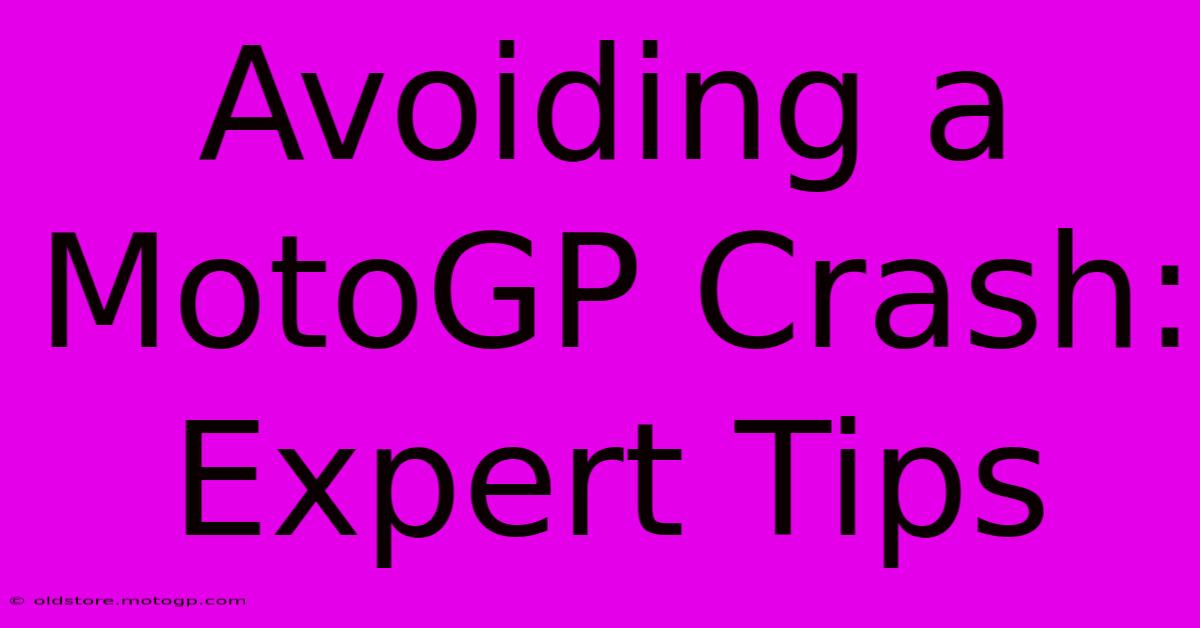Avoiding A MotoGP Crash: Expert Tips

Table of Contents
Avoiding a MotoGP Crash: Expert Tips
MotoGP racing is a spectacle of speed, skill, and breathtaking maneuvers. But behind the thrilling overtakes and nail-biting finishes lies a significant risk: crashing. While crashes are an inherent part of the sport, understanding and implementing preventative measures can drastically reduce your chances of ending up on the gravel. This article delves into expert tips and techniques to improve your safety and avoid a MotoGP crash, whether you're a seasoned pro or just starting out on the track.
Understanding the Causes of MotoGP Crashes
Before we dive into preventative measures, let's examine the common culprits behind MotoGP crashes. These include:
- Loss of Traction: This is arguably the most frequent cause. Sudden changes in track conditions (oil, water, debris), aggressive acceleration or braking, and leaning too far at high speeds can all lead to a loss of traction and subsequent crash.
- Rider Error: Mistakes like improper line selection, incorrect braking points, and misjudging other riders are significant contributors. Fatigue and pressure also play a role in rider error.
- Mechanical Failures: While less common, mechanical failures like brake failure or tire blowouts can unexpectedly throw a rider off balance. Regular bike maintenance is crucial.
- External Factors: Contact with other riders, unexpected obstacles on the track, or adverse weather conditions can unexpectedly cause crashes.
Essential Techniques to Avoid a MotoGP Crash
Now, let's explore practical techniques to mitigate these risks:
1. Mastering Smoothness and Control:
- Progressive Throttle and Brake Control: Avoid jerky movements. Smoothly apply the throttle and brakes, gradually increasing or decreasing pressure. This helps maintain traction and control, especially crucial in corners.
- Precision Line Selection: Choosing the optimal racing line is critical. Practice consistently and analyze your lines to identify areas for improvement. A clean line minimizes the need for aggressive maneuvers.
- Body Positioning: Maintain a relaxed but focused posture. Proper body positioning ensures you can effectively counterbalance the bike and adjust to unexpected situations.
2. Advanced Riding Techniques:
- Trail Braking: This involves braking while slightly turning into the corner. It allows you to carry more speed through the turn while keeping better control. Mastering trail braking requires significant practice and skill.
- Counter Steering: This crucial technique is used to initiate a turn by pushing the handlebar in the opposite direction of the turn. Proper counter-steering significantly increases stability and control.
- Weight Transfer: Learn to efficiently shift your weight to maintain balance and traction during acceleration, braking, and cornering.
3. Pre-Race Preparations & Track Awareness:
- Thorough Bike Inspection: Always conduct a comprehensive pre-race inspection of your motorcycle. Ensure all components are functioning correctly.
- Track Familiarization: Before the race, take time to familiarize yourself with the track layout. Identify blind corners, potential hazards, and optimal braking points.
- Weather Monitoring: Stay updated on weather conditions. Adjust your riding style according to the prevailing conditions—rain, wind, or extreme temperatures.
- Awareness of Other Riders: Maintain constant awareness of the other riders around you. Anticipate their moves and leave sufficient space to react to unexpected situations.
4. Mental Preparedness:
- Focus and Concentration: Maintain unwavering focus and concentration throughout the race. Distractions can lead to critical errors.
- Risk Assessment: Constantly assess the risks and make calculated decisions. Avoid unnecessary risks to improve your chances of completing the race safely.
- Fatigue Management: Recognize the signs of fatigue. Listen to your body and avoid pushing yourself beyond your limits.
Conclusion: Safety First in MotoGP
Avoiding a MotoGP crash requires a combination of skill, technique, and awareness. By mastering these essential techniques and prioritizing safety, you can significantly reduce your risk and enjoy the thrill of the sport with greater confidence. Remember, practice makes perfect, and continuous improvement is key to becoming a safer and more successful rider. Always prioritize safety above all else.

Thank you for visiting our website wich cover about Avoiding A MotoGP Crash: Expert Tips. We hope the information provided has been useful to you. Feel free to contact us if you have any questions or need further assistance. See you next time and dont miss to bookmark.
Featured Posts
-
Reach Unbelievable Speeds Moto Gp Bike For Sale
Feb 22, 2025
-
Formula 1 Parking The Easiest Way To Park
Feb 22, 2025
-
Sprint Race Results A Moment Of Glory
Feb 22, 2025
-
Austin Gp 2025 Dining And Entertainment
Feb 22, 2025
-
Limited Edition Racing Motorcycles Grab Yours Now
Feb 22, 2025
